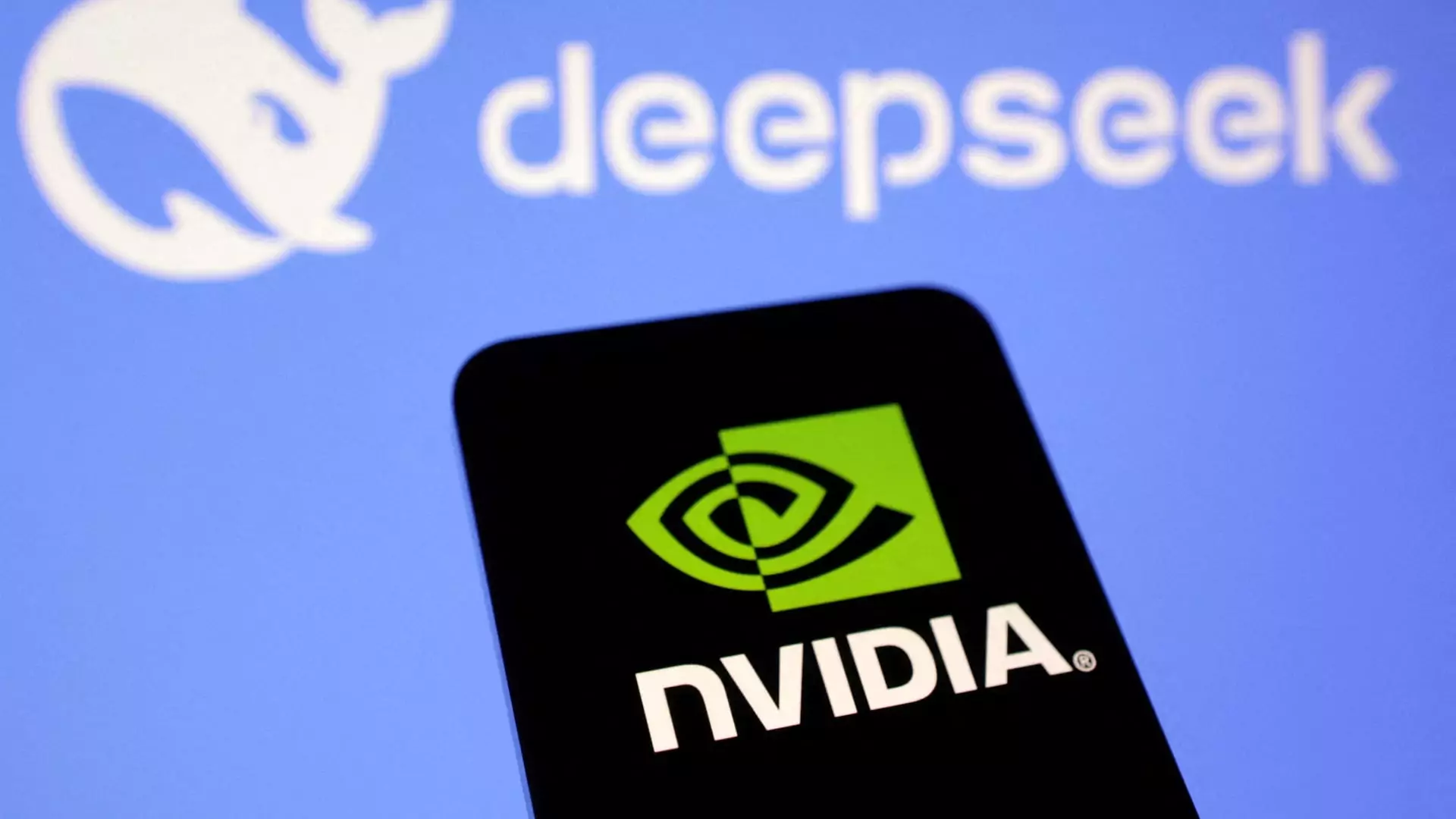The landscape of artificial intelligence (AI) is rapidly evolving, and the recent rise of DeepSeek is shaking the foundations of established giants like Nvidia. As the latest contender in the AI arena, DeepSeek has not only taken market shares by storm but also dramatically affected Nvidia’s market valuation, which experienced a staggering decline worth hundreds of billions. While this situation might signal doom for some, it has presented an unexpected pathway for smaller companies in the AI sector aimed at leveraging the chaos for growth and innovation.
Pioneering companies in AI technologies have begun to perceive the DeepSeek emergence not as a threat but as a “massive opportunity.” Andrew Feldman, CEO of Cerebras Systems—a rival in AI chip manufacturing—gestured towards this optimism, claiming that developers are eager to migrate away from proprietary systems like those of OpenAI. Instead, they are looking towards more accessible and cost-effective solutions found in DeepSeek’s open-source model. This is indicative of a broader trend that might reshape the power dynamics within the industry.
At the heart of DeepSeek’s strategy is its open-source model, which stands in stark contrast to the closed systems long championed by companies like OpenAI. By providing developers with free and modifiable source code, DeepSeek opens the door for a diverse range of innovative applications that can disrupt prevailing trends. As Feldman articulated, eliminating the “moats” that traditionally protected larger firms enhances competitive dynamics, encouraging more companies to embrace open-source development and possibly lead to more rapid advancements in technology.
DeepSeek claims that its reasoning model, the R1, can compete with high-caliber American tech products while operating at significantly lower costs. Nevertheless, skepticism is present among competitors and analysts, who raise questions about these assertions. The AI ecosystem often mirrors historical tech markets, where reductions in costs can catalyze widespread adoption. This is a path that promises to redefine how AI is utilized across various sectors.
The transition from training AI models to putting them to practical use—known as inference—is critical in the ongoing AI conversation. While Nvidia has thus far dominated the GPUs necessary for training, the rise of DeepSeek presents an opportunity for growth in the inference market segment. Inference, which typically requires less computational power, is increasingly seen as a viable area for expansion by AI chip startups.
Phelix Lee, an equity analyst, delineated the difference between training and inference, characterizing the latter as the actual application of AI models in real-world contexts. This separation underscores a strategic shift, where aspiring AI companies are beginning to cater to inference needs that leverage DeepSeek’s offerings. Indeed, many industry players are experiencing an uptick in demand for chips tailored for inference capabilities, revealing a significant market shift.
This trend is not merely a theoretical exercise; numerous AI chip startups are witnessing a newfound surge in interest from both established and emerging clientele. The concept promoted by Sid Sheth, CEO of d-Matrix, revolves around the adaptability of smaller models to perform at levels matching or even exceeding those of larger, proprietary frameworks—without incurring colossal expenses in the process. This paradigm shift represents a pivotal moment for AI adoption across global markets.
Robert Wachen, the co-founder and COO of Etched, further reinforced this notion by citing the influx of inquiries from companies seeking to optimize their inference clusters following DeepSeek’s entry into the market. This rising interest signals a shift in investment strategies, whereby organizations are redirecting capital traditionally committed to training towards enhancing their inference capabilities.
Reinforcing this notion, analysts suggest that DeepSeek’s unique engineering advancements could catalyze growth in the broader AI chip industry. According to a Bain & Company report, ongoing improvements in cost efficiencies can ultimately lead to a ripple effect: cheaper inference costs generating an uptick in AI utilization. This dynamic aligns with Jevons Paradox, where technological cost reductions can foster increased demand—a cycle that holds significant promise for the future.
Investment firms like Wedbush reflect the optimistic sentiment that AI’s potential for broader applications in both enterprise and consumer markets will spur demand across the board. With growing demands for AI solutions, Sunny Madra, COO at Groq, emphasized that the increasing token requirements from AI models highlight a significant imbalance in supply and demand, allowing smaller players like Groq the opportunity to capture significant market share.
DeepSeek’s entry into the competitive AI landscape has undoubtedly created ripples of opportunity rather than just setbacks for others. The balance of power is subtly shifting, offering smaller companies an avenue to assert their influence amidst a technological renaissance. As we move forward, the implications of DeepSeek’s innovation and market strategies will reverberate, ushering in an era of broader AI adoption and a more inclusive environment for burgeoning tech firms.

